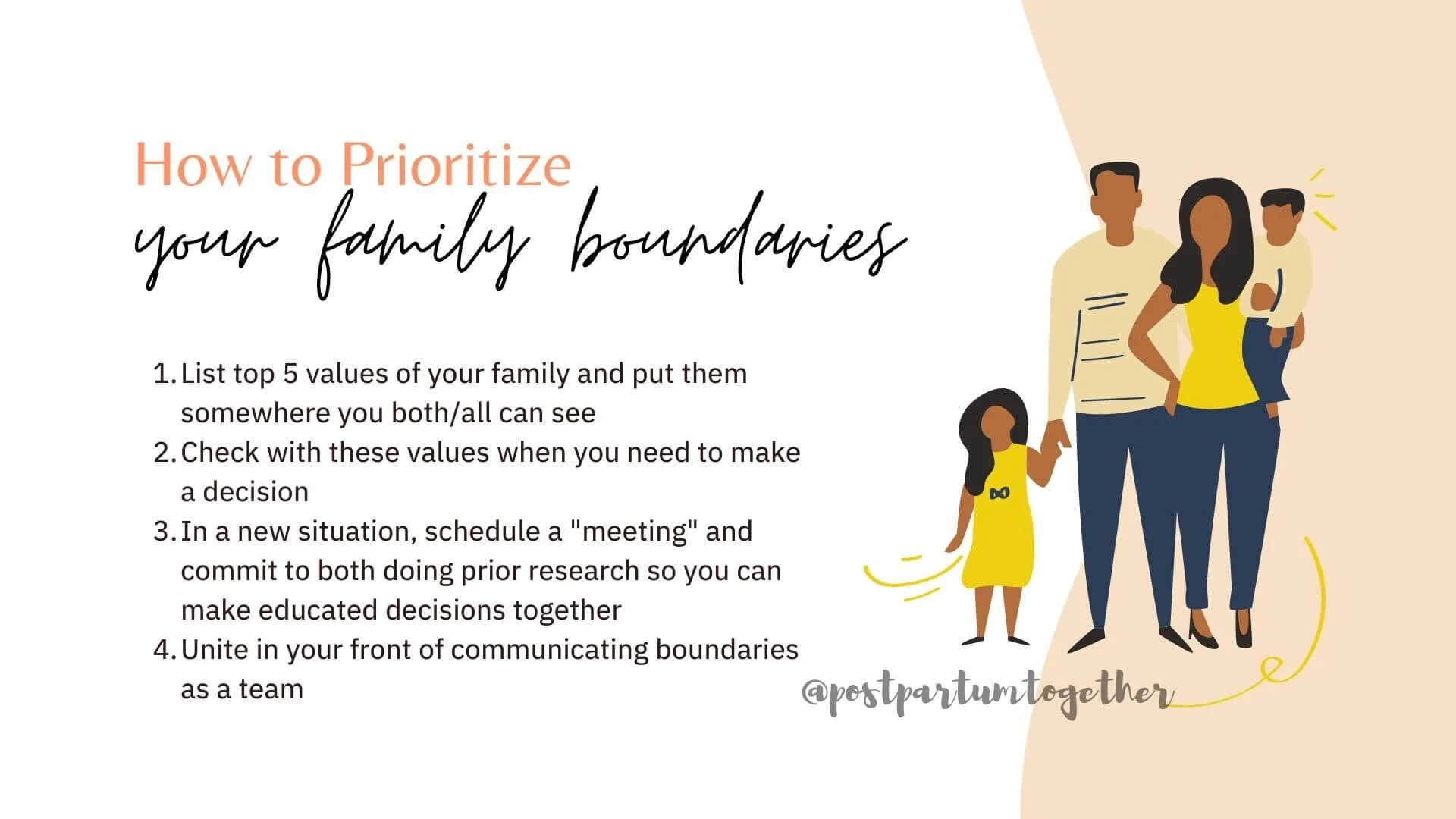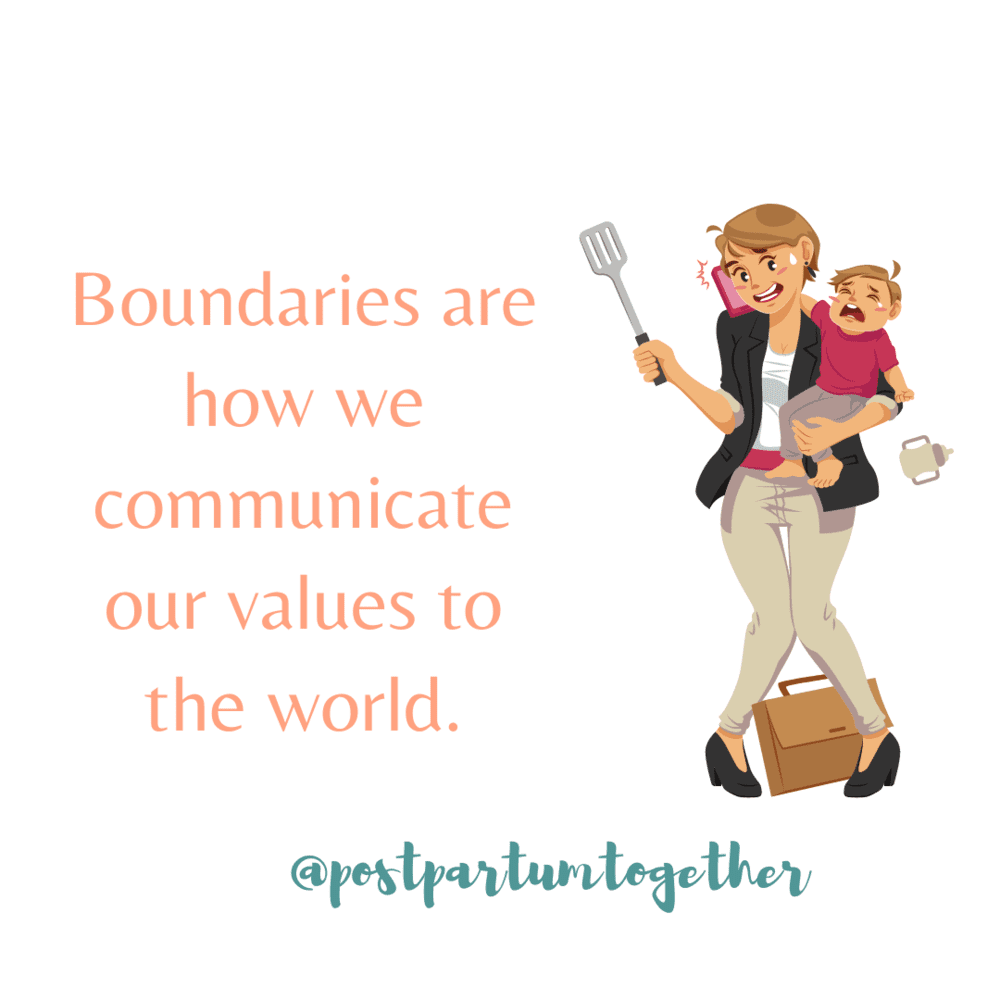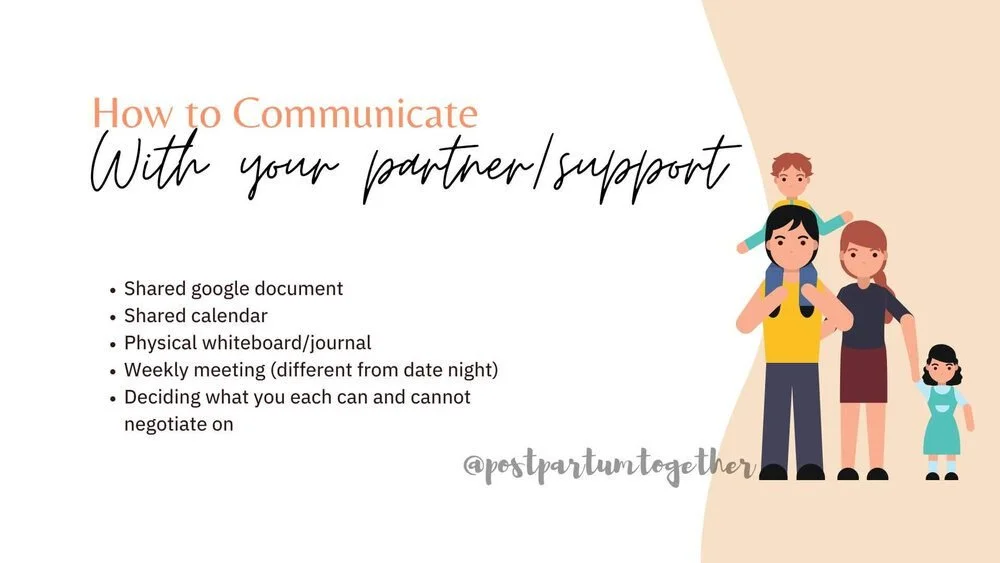You Need Boundaries After Baby
How to Set Boundaries After Baby for You and Your Family
Often I hear from clients and moms on social media that after their baby was born, they felt out of control. People wanted to visit. There were so many opinions. There was so little sleep and time to connect as a new family.
Whether you’re the kind who wants space after baby or wants visitors waiting at the door, it’s important to be on the same page with your partner and support people and to have boundaries in place that help you have what you need (because believe it or not, momma, YOU and YOUR NEEDS are really important).
Boundaries are How We Communicate Our Values to the World
Have you ever felt mean or even “bitchy” for needing and setting boundaries? Especially as women, we are often raised to be people pleasers. And yet, this is exhausting and doesn’t take our needs and desires into consideration. It is important to be a kind and giving person, but in order to truly do that, you need to establish boundaries.
Finding our values
When we set boundaries, we are challenged to identify and communicate our values. We must look at what we have the time, energy, space, resources for and what we do not. Boundaries communicate what we believe as a family and how our values reflect that. Setting boundaries leaves less room for confusion and resentment. Boundaries Can be Hard to Set For many, setting boundaries is very difficult. It can create a pit in the stomach and a fear of offending someone else.
Confidence in boundaries
While asking for and accepting help is vital for new families, so is having boundaries around what is helpful and what is not. While boundaries may feel uncomfortable at first, they can help you avoid even more discomfort doing the road. Without boundaries, you may have difficult and tense conversations and interactions in the heat of the moment. Without boundaries, you will likely experience your own resentment and feelings that interfere with your needs and emotions.
Related:How to find a therapist
Set Boundaries After Baby Inside and Outside of the Home
Inside the Home
When it comes to setting boundaries as a new family, you want to consider what you need inside your home and outside of your home. Boundaries inside the home include boundaries with your partner, with your time and with who comes in and out of the home.
These boundaries directly impact your “safe space.” For new moms this might mean setting boundaries that ensure that you have time to sleep and not host visitors. This might mean that anyone who wants to see the baby can also help with something around the house. This might mean being on the same page with your partner about the time you each need to yourself. It also includes setting boundaries around how you make decisions for things like sleeping and eating for your baby.
Outside of the Home
When it comes to setting boundaries outside of the home, this may be where you are willing to take baby. This could be deciding when you’re ready to attend a big family function or what kind of social events you want to be apart of. This means learning to say “no” to things that aren’t fully in line with your values so that you can say “yes” to the things most important to you.
In the current midst of COVID-19, setting boundaries both inside and outside of the home include being on the same page with your partner about the kind of restrictions you want in place as far as visitors, leaving the home, childcare, work, etc. Boundaries may mean that you are finding creative ways for family to get to know your baby. Boundaries may mean that you are doing things like grocery delivery to avoid the stores. There is no “right way” to approach this, except for being on the same page after conversation and research. (We will look at how to do this below.)
Deciding on And Holding to Boundaries
1. Prioritize: Decide what is most important for you- for your time, your energy, your presence. Think about what you can let go of and what you feel firmly about.
2. Communicate: Use verbal and non-verbal tools for communicating with your partner and/or support team.
3. Examine Mind and Body: Know the implications of boundaries- what feels mentally taxing? What takes an emotional toll? Approach your boundaries out of these root needs/effects. Adjust as needed.
4. Define Circles: You likely have different levels of intimacy with different circles in your life. Define these circles and who is in each of them. Who is part of decision making? Who gets more intimate parts of your family?
5. Define Activities: What activities are you comfortable with? Specifically with COVID, what approach does your family take and why? How can you communicate these to others outside of your home?
6. Listen, Learn, Respond: Set an intention for listening without emotional charge. Learn from those you trust. Respond with firm kindness.
How to Prioritize Your Family Boundaries
List top 5 values of your family and put them somewhere you both/all can see
Check with these values when you need to make a decision
In a new situation, schedule a "meeting" and commit to both doing prior research so you can make educated decisions together
Unite in your front of communicating boundaries as a team
How to Communicate Boundaries After Baby with Your Partner
Shared google document
Shared calendar
Physical whiteboard/journal
Weekly meeting (different from date night)
Deciding what you each can and cannot negotiate on
If boundaries feel like a big and difficult topic, you are not alone. We aren’t always taught to set healthy boundaries for ourselves and it’s not often we are given tools and tips for communicating our needs. It’s my hope that some of these points and tips resonate with you, normalize your experience, and give you the tools you need for boundaries that feel empowering for you.
Help with Setting Boundaries After Baby
If you want to set health boundaries and you are currently expecting, let’s talk about doing some coaching before the baby comes so you and your partner can have mutual understanding, a strong foundation, and great communication. We talk about boundaries as a conversation to have with your partner during pregnancy in the Creating Your Postpartum Plan eCourse. This comprehensive eCourse helps you to prepare for postpartum by working through the changes you may face and how you want to lay the foundation for your family. You get a 10 page download to complete your own personalized plan while working through the instructional videos. In this course we talk a lot about boundaries because it can be hard to anticipate what your needs will be and what the reaction from others will be, but by proactively working with your partner and support team, you can ensure that you find and use your voice and set healthy boundaries.



